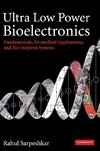
-
 Anglický jazyk
Anglický jazyk
Handbook of textile material II
Autor: Getaneh Eshetie
A textile is a flexible material consisting of a network of natural or artificial fibers and yarn. Yarn is produced by spinning processes. Clothing is a basic necessity and most human beings love wearing stylish, durable and functional clothes in the world.... Viac o knihe
Na objednávku
36.17 €
bežná cena: 41.10 €
O knihe
A textile is a flexible material consisting of a network of natural or artificial fibers and yarn. Yarn is produced by spinning processes. Clothing is a basic necessity and most human beings love wearing stylish, durable and functional clothes in the world. There are natural and man-made fibers and polymers used to manufacture different types of fabrics for fashion purpose. These materials come from four main sources: Animal (wool, silk), plant (cotton, flax, and jute), mineral (asbestos, glass) and synthetic (nylon, polyester, acrylic). Natural fabrics are derived from the fibers of animal coats, plant seeds, stems and leaves, and silkworm cocoons. They are soft and breathable and UV light does not cause discoloration. Cotton is the most popular natural fibers. Those end products are right from the collection and processing of textile raw materials through spinning, weaving or knitting and finishing. Textile designers can produce a very large variety of cloths depending on the types of fabrics. Different variety of fabrics can inspire the designers. Most commonly textile fabric forming methods are Weaving, Knitting and Non-woven.
- Vydavateľstvo: LAP LAMBERT Academic Publishing
- Rok vydania: 2020
- Formát: Paperback
- Rozmer: 220 x 150 mm
- Jazyk: Anglický jazyk
- ISBN: 9786203040418










 Nemecký jazyk
Nemecký jazyk 